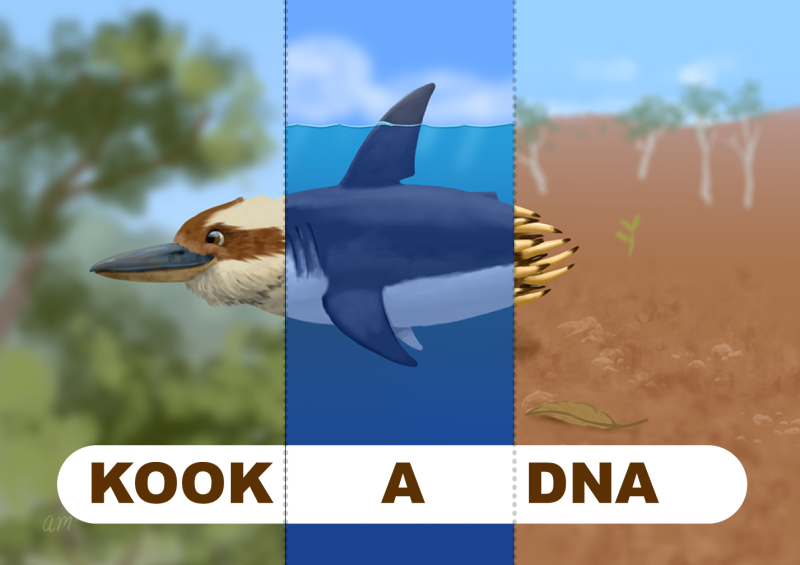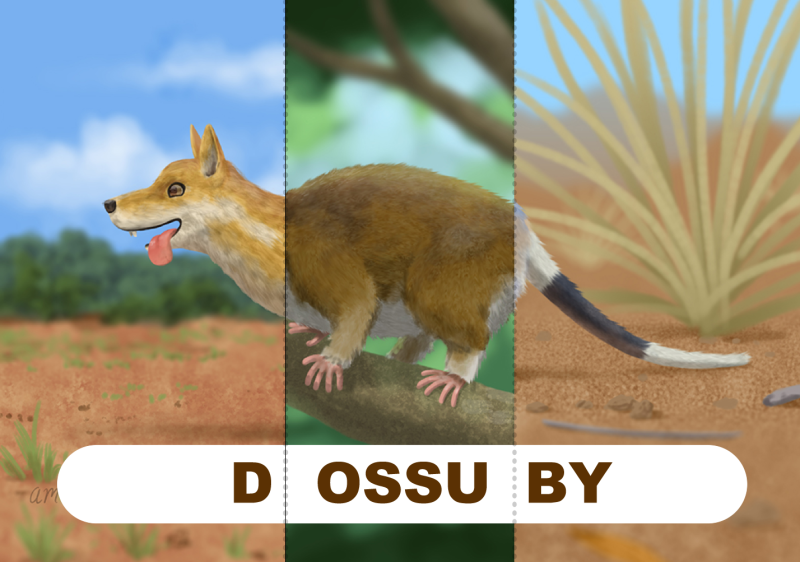Multiplication: What is a Plocoroo?
View Sequence overviewTree diagrams make the multiplicative structure in “for each” problems visible by showing how each choice connects to several others.
In “for each” problems, the total number of combinations can be found by multiplying the number of options for each part.
Whole class
What is a Plocoroo? PowerPoint
Each student
Optional: What is a Plocoroo? Pictures printed on A5 or A4 paper for students to make their own books
Task
Revise: In our human tree diagram, there were two heads. For each head there were two bodies, and for each body there were two tails. There were eight possible animal combinations in total. In the book What is a Plocoroo?, there were ten heads. For each head there were ten bodies, and for each body there were ten tails. There were 1000 possible animal combinations.
Invite students to share the relationships between numbers that they notice, without confirming correct answers at this stage.
Pose the question: How many heads, bodies and tails are needed to create a book that has more than 100 different animal combinations, but fewer than 200 different animal combinations?
Making the answer is the question

An effective way to turn a closed mathematics problem into an open one is to pose the answer as the question. This approach has been used in this task. Students are given the total number of combinations and must work backwards to determine how many heads, bodies, and tails could produce that result. Reversing the usual problem structure encourages students to draw on their understanding of multiplicative relationships and the “for each” idea.
By reasoning about factors, possibilities, and constraints, students deepen their understanding of how multiplication can be used to represent and analyse combinations. Using an open problem fosters reasoning and problem solving and promotes rich discussion, as students make sense of the relationships that could lead to the given result. Instead of simply applying a procedure, they explore, test, and justify different possibilities that fit the conditions.
An effective way to turn a closed mathematics problem into an open one is to pose the answer as the question. This approach has been used in this task. Students are given the total number of combinations and must work backwards to determine how many heads, bodies, and tails could produce that result. Reversing the usual problem structure encourages students to draw on their understanding of multiplicative relationships and the “for each” idea.
By reasoning about factors, possibilities, and constraints, students deepen their understanding of how multiplication can be used to represent and analyse combinations. Using an open problem fosters reasoning and problem solving and promotes rich discussion, as students make sense of the relationships that could lead to the given result. Instead of simply applying a procedure, they explore, test, and justify different possibilities that fit the conditions.
Explain to students that they do not need to use the same number of heads, bodies, and tails, as in the previous lesson (i.e. ten of each). They may choose different quantities of animal parts—such as two heads, six bodies, and seven tails.
Allow students time to solve the problem and ask them to present their solution as a poster that clearly shows their reasoning and method.
- Do students struggle to make a start?
- If students struggle to make a start, ask them to create a tree diagram to find all possible combinations for three heads, three bodies and three tails. Ask them to consider how many combinations there would be if they added one more head. What about two more heads? From here they can start to add additional body parts to make a number just over 100.
- Can students use a tree diagram accurately to represent part of their thinking and then generalise their results?
- Students might represent a portion of the problem and then generalise. For example, with five heads, four bodies, and six tails, they could first show all possible body combinations for one head and generalise this for all heads. They could then represent all possible tail combinations for one head–body pairing and generalise for all head–body combinations. Using one example to generalise for all combinations demonstrates an understanding of “for each”.
- Do students use multiplication to find their answer?
- The problem can be solved efficiently by finding three numbers whose product is between 100 and 200. Some students may have noticed this numerical relationship from the previous problem; however, recognising this pattern does not necessarily mean they understand why it holds.
Encourage students to explain their reasoning clearly. If they struggle to articulate their thinking, prompt them to use a tree diagram to model a portion of the problem—for example, all possible bodies for one head, and then all possible tails for one head–body combination. This representation can help them see why multiplication represents the total number of combinations and make sense of the relationship between the numbers.
Select some students to present their solutions to the class. Use the students’ work to discuss that for each of the [number] heads there were [number] bodies, and for each head-body combination there were [number] tails. For example, for five heads, four bodies and six heads, for each of the five heads there were four bodies, and for each head-body combination there were six tails.
Use slides 15-17 of What is a Plocoroo? PowerPoint to look at the number of possible combinations for two animals. Look at how the tree diagram for the possible combinations can also be represented as a multiplication expression.
Consider combinations that the students found as a solution to the problem and how these solutions might be recorded symbolically. For example, five heads, four bodies and six heads can be recorded symbolically as:
5 heads × 4 bodies × 6 tails = 120 different animal combinations
Connecting representations

In this task, students work with two key representations—a tree diagram and a multiplication equation—to explore the same mathematical relationship. It is important that students see how these representations connect rather than treating them as separate methods. The number of branches in the tree diagram corresponds directly to the factors in the multiplication, showing how each choice for one animal part combines with every choice for the next. When students make this connection, they begin to understand that multiplication is not just a procedure for finding the total number of combinations but a way of expressing the structure revealed in the diagram. This linking of representations deepens their understanding of why multiplication applies in this context and supports their movement from concrete examples toward general reasoning.
In this task, students work with two key representations—a tree diagram and a multiplication equation—to explore the same mathematical relationship. It is important that students see how these representations connect rather than treating them as separate methods. The number of branches in the tree diagram corresponds directly to the factors in the multiplication, showing how each choice for one animal part combines with every choice for the next. When students make this connection, they begin to understand that multiplication is not just a procedure for finding the total number of combinations but a way of expressing the structure revealed in the diagram. This linking of representations deepens their understanding of why multiplication applies in this context and supports their movement from concrete examples toward general reasoning.
Return to the book What is a Plocoroo?. Remind students that there were ten heads, ten bodies and ten tails.
Explain: “For each” problems can be represented using multiplication. The number of combinations in What is a Plocoroo? is 10 × 10 × 10 = 1000.
Allow students to represent their solutions for 100-200 combinations as a multiplication expression.
Possible additional activity: Provide students with animal pictures and allow them to create their own books. They should include a page that explains the total number of different animal combinations and shows how this total can be calculated.